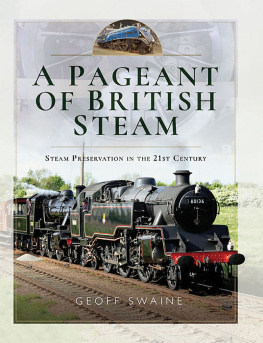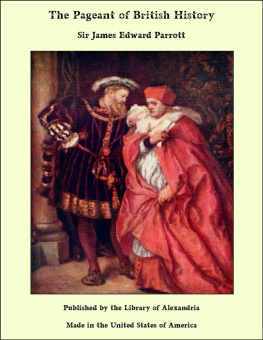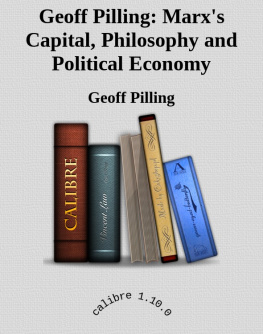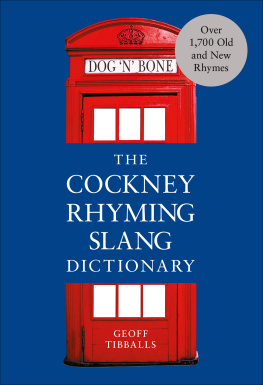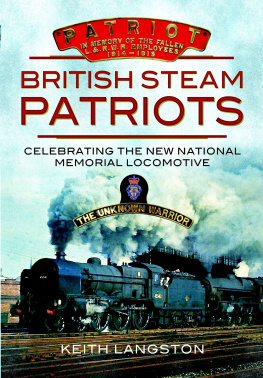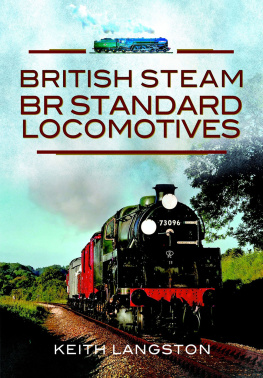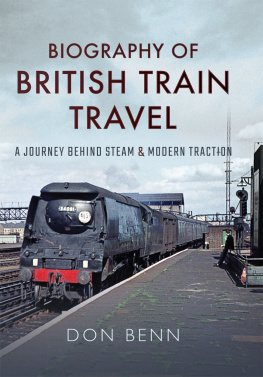Swaine Geoff - A Pageant of British Steam
Here you can read online Swaine Geoff - A Pageant of British Steam full text of the book (entire story) in english for free. Download pdf and epub, get meaning, cover and reviews about this ebook. year: 2018, publisher: Pen & Sword Books, genre: Science fiction. Description of the work, (preface) as well as reviews are available. Best literature library LitArk.com created for fans of good reading and offers a wide selection of genres:
Romance novel
Science fiction
Adventure
Detective
Science
History
Home and family
Prose
Art
Politics
Computer
Non-fiction
Religion
Business
Children
Humor
Choose a favorite category and find really read worthwhile books. Enjoy immersion in the world of imagination, feel the emotions of the characters or learn something new for yourself, make an fascinating discovery.
- Book:A Pageant of British Steam
- Author:
- Publisher:Pen & Sword Books
- Genre:
- Year:2018
- Rating:4 / 5
- Favourites:Add to favourites
- Your mark:
- 80
- 1
- 2
- 3
- 4
- 5
A Pageant of British Steam: summary, description and annotation
We offer to read an annotation, description, summary or preface (depends on what the author of the book "A Pageant of British Steam" wrote himself). If you haven't found the necessary information about the book — write in the comments, we will try to find it.
A Pageant of British Steam — read online for free the complete book (whole text) full work
Below is the text of the book, divided by pages. System saving the place of the last page read, allows you to conveniently read the book "A Pageant of British Steam" online for free, without having to search again every time where you left off. Put a bookmark, and you can go to the page where you finished reading at any time.
Font size:
Interval:
Bookmark:

A PAGEANT OF BRITISH STEAM
STEAM PRESERVATION IN THE 21ST CENTURY
STEAM PRESERVATION IN THE 21ST CENTURY
Geoff Swaine

Front cover: BR 4MT 2-6-4T No. 80136 pilots 2MT 2-6-0 No. 78018 southbound along the double track section of the Great Central Railway.
First published in Great Britain in 2018 by
Pen and Sword Transport
An imprint of
Pen & Sword Books Ltd
Yorkshire - Philadelphia
Copyright Geoff Swaine, 2018
ISBN 978 1 52671 757 3
eISBN 978 1 52671 759 7
Mobi ISBN 978 1 52671 758 0
The right of Geoff Swaine to be identified as Author of this work has been asserted by him in accordance with the Copyright, Designs and Patents Act 1988.
A CIP catalogue record for this book is available from the British Library.
All rights reserved. No part of this book may be reproduced or transmitted in any form or by any means, electronic or mechanical including photocopying, recording or by any information storage and retrieval system, without permission from the Publisher in writing.
Pen & Sword Books Ltd incorporates the Imprints of Pen & Sword
Books Archaeology, Atlas, Aviation, Battleground, Discovery, Family History,
History, Maritime, Military, Naval, Politics, Railways, Select, Transport,
True Crime, Fiction, Frontline Books, Leo Cooper, Praetorian Press,
Seaforth Publishing, Wharncliffe and White Owl.
For a complete list of Pen & Sword titles please contact
PEN & SWORD BOOKS LIMITED
47 Church Street, Barnsley, South Yorkshire, S70 2AS, England
E-mail:
Website: www.pen-and-sword.co.uk
or
PEN AND SWORD BOOKS
1950 Lawrence Rd, Havertown, PA 19083, USA
E-mail:
Website: www.penandswordbooks.com

4-6-2 LMS No. 6201 Princess Elizabeth set a steam record for the 401 mile Glasgow to London run in 1936 at an average speed of 70mph. An incredible achievement, especially considering the summits which had to be overcome. Here the Pacific engine takes a railtour past Bishops Stortford in Essex heading for Norwich.
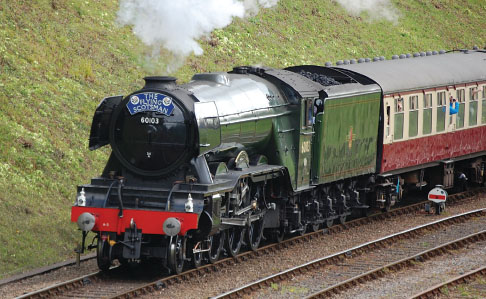
Following a ten year overhaul, No. 60103 Flying Scotsman makes appearances all across the country. Here the popular engine can be seen on the Bluebell Railway heading a northbound service towards East Grinstead.

In the guise of 92220 Evening Star at Loughborough is BS 9F 2-10-0 No.92214, a descendant from the Riddles wartime design with the same wheel arrangement.
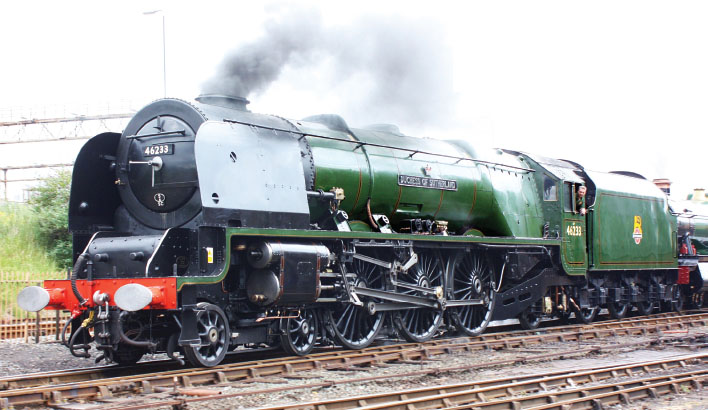
The classic LMS Duchess makes a visit to the Tyseley summer open day as a guest visitor to this GWR stronghold. LMS Coronation Class 8P 4-6-2 No. 46233 Duchess of Sutherland leads the cavalcade.

Built by Bulleid for the Southern Railway, air-smoothed Pacific City of Wells crosses the River Irwell on the East Lancs Railway.

BR No. 34092 West Country Pacific City of Wells at Rawtenstall, the northern end of the East Lancs Railway. Pacific is the name given to any locomotive with a 4-6-2 wheel arrangement.
T he preserved railways of Britain have risen in half a century to become an industrial wonder of the world. After the Second World War, Britain continued with steam power for railways because the nation was literally bankrupt and could not afford the cost of importing diesel fuel. An abundant supply of coal was still there to be mined, so the government decreed that the country should advance forward with steam power. This was unlike other nations of Europe who had their railway systems virtually wiped out. For them, almost a complete rebuild was necessary, which would go forward with diesel and electric traction. To support the decision to proceed with steam, the British Government ordered twelve classes of new locomotives of which 999 were built.
The continuing of steam through the 1950s led to a whole new pastime evolving trainspotting. The lads had their Ian Allan spotters books which listed every single locomotive, giving their wheel arrangement, power rating and even their shed allocation. The wonder of all this was to come to an end though; in 1955, the British Transport Commission issued a document stating that within a decade all steam power would be removed from the railways, to be replaced by diesel and electric traction.
This operation proceeded in a confused manner, for while the Commission attempted to remove steam, British Railways were still building their range of Standard Class steam locomotives, a situation which carried on right up to 1960.
To speed up the railway rationalisation, an industrialist was employed to oversee the Modernisation Plan and make some recommendations. His name was Dr Richard Beeching, who issued his report in 1963. This report showed, that in his opinion, 5,000 miles of railway lines should be removed, 2,000 stations shut down and all steam power removed, taking with it all the sheds and paraphernalia which supported the steam industry. Oh, and also thousands of rail jobs would go, leaving many men who had family traditions in the railways without employment. As could be imagined, the name Beeching became notorious in a nation who loved industry and steam power. The Beeching Plan was put into operation, with his full closure plan being achieved by 1973.
It is true that Britain had too many railway lines. In Victorian times, the railway mania was being led by private industrialists, whose only thoughts were in capital gain. The government and population of the day were all caught up in the wonder of the new transport system and how for the first time the ordinary person could travel beyond the confines of their own town or village. Rail lines went to the coast, thereby making holidays available for the first time. At the time all those coastal places were just little villages and hamlets. Once the railways arrived they grew to become the resorts they are today.
Likewise, industry was caught up in it all. Cotton could be delivered in hours to the inland mills rather than days by canal. Coal could be delivered to all the industry which needed it. The residents of inland towns could eat fresh fish for the first time with the product reaching them the same day it arrived in the ports.
The fast and almost uncontrolled expansion of the railways in the 1800s led to many routes being duplicated, with many towns being served by more than one private railway company. This didnt happen in the other countries of Europe, as those systems were generally government planned, whereby the end product was ordered and methodically produced. A century later, the duplication of lines in Britain did prove to have an advantage because in wartime, when the railways were targeted by bombs, it often turned out that there was an alternative route not very far away.
Font size:
Interval:
Bookmark:
Similar books «A Pageant of British Steam»
Look at similar books to A Pageant of British Steam. We have selected literature similar in name and meaning in the hope of providing readers with more options to find new, interesting, not yet read works.
Discussion, reviews of the book A Pageant of British Steam and just readers' own opinions. Leave your comments, write what you think about the work, its meaning or the main characters. Specify what exactly you liked and what you didn't like, and why you think so.

